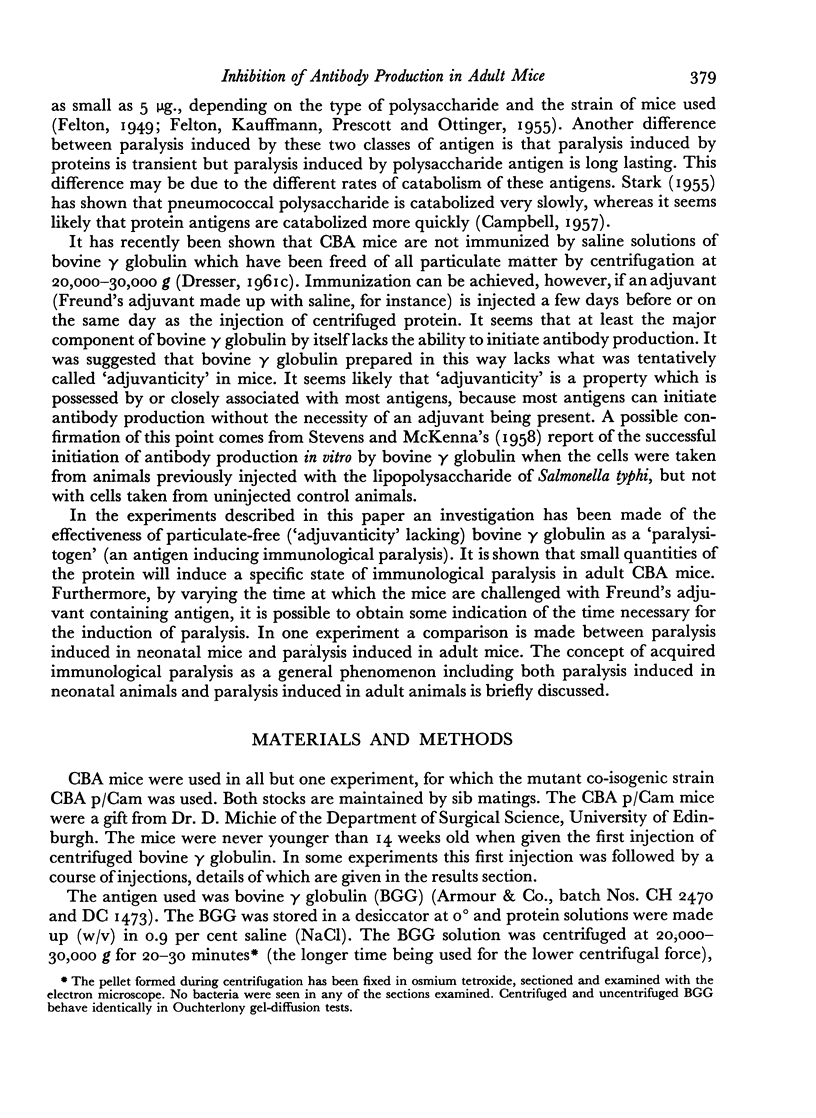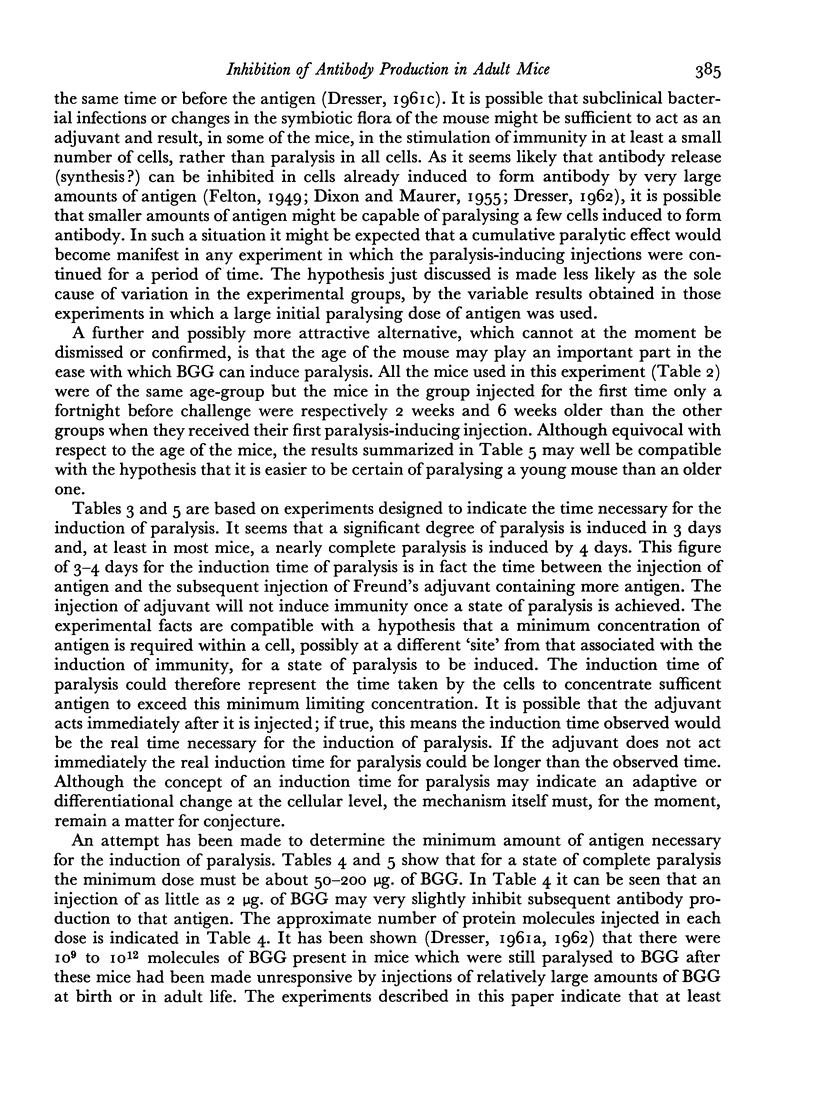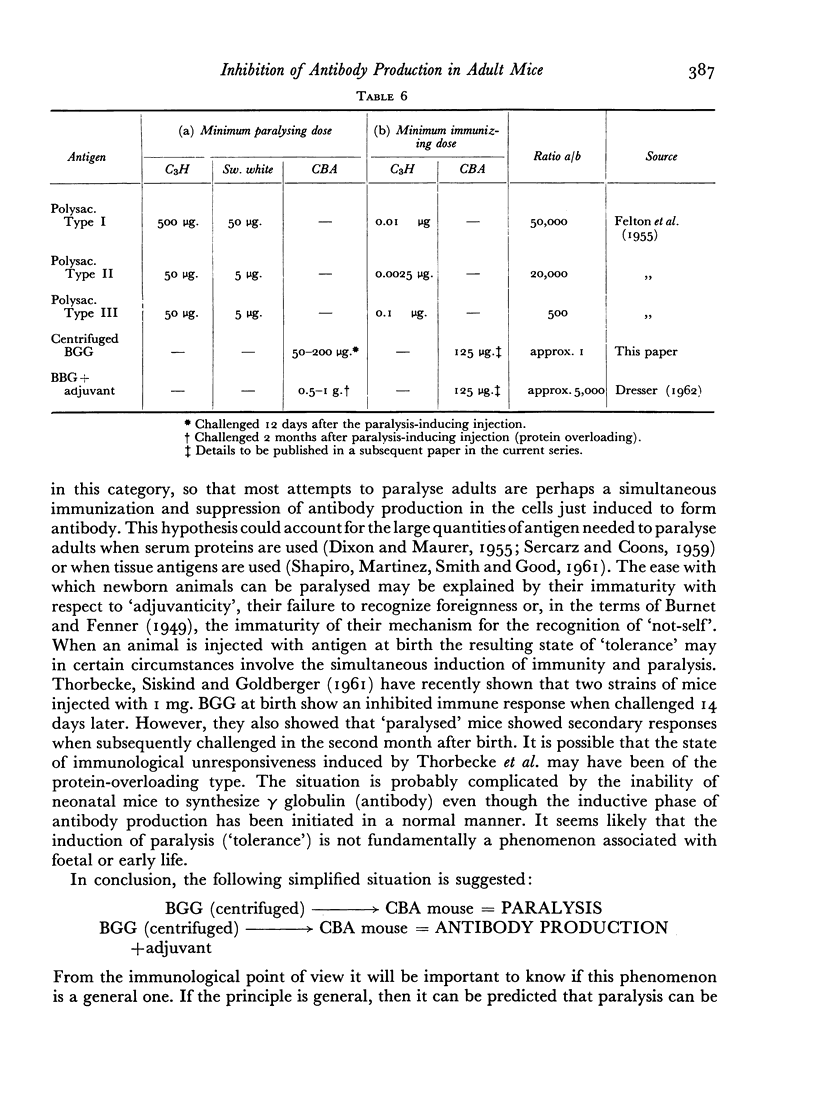Abstract
A state of immunological paralysis has been induced in adult CBA mice by intraperitoneal injections of small quantities of bovine γ globulin (BGG). The minimum paralysing dose of BGG has been found to be between 50 and 200 μg. A dose as small as 2 μg. has been found to have a slight paralysing effect. The time necessary for the induction of paralysis by 50 μg. to 2 mg. of BGG in CBA mice is 3–4 days.
Paralysis is induced by only one component of BGG; this component is incapable of inducing an antibody response unless an injection of adjuvant is made at the same time or slightly before the injection of the antigen. The BGG is centrifuged at an RCF of 20,000–30,000 g to remove particulate matter. Failure to remove the particulate matter leads to sporadic immune responses in groups of mice injected with the protein. Mice given a paralysing injection of BGG were subsequently challenged by an injection of BGG in Freund's adjuvant. The result of this challenge was tested by an injection of radioactively-labelled antigen and the elimination of this antigen from the circulation of the challenged mice was followed for several days. `Immune elimination' can easily be distinguished from `non-immune elimination'. The presence of antibody to the non-paralysing components of BGG in sera from paralysed mice was confirmed using the Ouchterlony geldiffusion technique.
Full text
PDF










Images in this article
Selected References
These references are in PubMed. This may not be the complete list of references from this article.
- CAMPBELL D. H. Some speculations on the significance of formation and persistence of antigen fragments in tissues of immunized animals. Blood. 1957 Jul;12(7):589–592. [PubMed] [Google Scholar]
- CINADER B., DUBERT J. M. Acquired immune tolerance to human albumin and the response to subsequent injections of diazo human albumin. Br J Exp Pathol. 1955 Oct;36(5):515–529. [PMC free article] [PubMed] [Google Scholar]
- DRESSER D. W. A study of the adoptive secondary response to a protein antigen in mice. Proc R Soc Lond B Biol Sci. 1961 Jul 25;154:398–417. doi: 10.1098/rspb.1961.0039. [DOI] [PubMed] [Google Scholar]
- DRESSER D. W. Elimination of 131-I-labelled protein antigens from the circulation of the mouse. Immunology. 1960 Oct;3:289–295. [PMC free article] [PubMed] [Google Scholar]
- FELTON L. D., KAUFFMANN G., PRESCOTT B., OTTINGER B. Studies on the mechanism of the immunological paralysis induced in mice by pneumococcal polysaccharides. J Immunol. 1955 Jan;74(1):17–26. [PubMed] [Google Scholar]
- HANAN R., OYAMA J. Inhibition of antibody formation in mature rabbits by contact with the antigen at an early age. J Immunol. 1954 Jul;73(1):49–53. [PubMed] [Google Scholar]
- STARK O. K. Studies on pneumococcal polysaccharide. II. Mechanism involved in production of immunological paralysis by type I pneumococcal polysaccharide. J Immunol. 1955 Feb;74(2):130–133. [PubMed] [Google Scholar]
- TERRES G., HUGHES W. L. Acquired immune tolerance in mice to crystalline bovine serum albumin. J Immunol. 1959 Nov;83:459–467. [PubMed] [Google Scholar]



